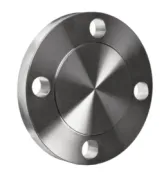-
Cangzhou Yulong Steel Co., Ltd.
-
Phone:
+86 13303177267 -
Email:
admin@ylsteelfittings.com
- English
- Arabic
- Italian
- Spanish
- Portuguese
- German
- kazakh
- Persian
- Greek
- French
- Russian
- Polish
- Thai
- Indonesian
- Vietnamese
- Zulu
- Korean
- Uzbek
- Hindi
- Serbian
- Malay
- Ukrainian
- Gujarati
- Haitian Creole
- hausa
- hawaiian
- Hebrew
- Miao
- Hungarian
- Icelandic
- igbo
- irish
- Japanese
- Javanese
- Kannada
- Khmer
- Rwandese
- Afrikaans
- Albanian
- Amharic
- Armenian
- Azerbaijani
- Basque
- Belarusian
- Bengali
- Bosnian
- Bulgarian
- Catalan
- Cebuano
- China
- China (Taiwan)
- Corsican
- Croatian
- Czech
- Danish
- Esperanto
- Estonian
- Finnish
- Frisian
- Galician
- Georgian
- Kurdish
- Kyrgyz
- Lao
- Latin
- Latvian
- Lithuanian
- Luxembourgish
- Macedonian
- Malgashi
- Malayalam
- Maltese
- Maori
- Marathi
- Mongolian
- Myanmar
- Nepali
- Norwegian
- Norwegian
- Occitan
- Pashto
- Dutch
- Punjabi
- Romanian
- Samoan
- Scottish Gaelic
- Sesotho
- Shona
- Sindhi
- Sinhala
- Slovak
- Slovenian
- Somali
- Sundanese
- Swahili
- Swedish
- Tagalog
- Tajik
- Tamil
- Tatar
- Telugu
- Turkish
- Turkmen
- Urdu
- Uighur
- Welsh
- Bantu
- Yiddish
- Yoruba

Dec . 21, 2024 09:11 Back to list
threaded tube fitting
Understanding Threaded Tube Fittings Essential Components for Fluid Systems
Threaded tube fittings play a crucial role in various industries, providing reliable connections between pipes and tubing. These fittings are vital for maintaining the integrity of fluid systems, ensuring that liquids and gases flow seamlessly without leaks. This article will explore the design, types, applications, and advantages of threaded tube fittings, highlighting their importance in engineering and plumbing.
What are Threaded Tube Fittings?
Threaded tube fittings are mechanical components designed to connect two or more pieces of tubing or piping in a fluid handling system. They feature internal or external threads that allow for secure connections. The simplicity of their design makes them popular across diverse sectors, including oil and gas, automotive, pharmaceuticals, and construction.
The primary function of thread fittings is to create a tight seal that can withstand the pressure and temperature variations typical in various environments. The fittings can be made from a variety of materials, including stainless steel, brass, plastic, and other alloys, providing options that cater to different operational requirements.
Types of Threaded Tube Fittings
Threaded tube fittings come in several types, each suited for specific applications
1. Male and Female Threaded Fittings These are the most common types, where a male fitting has external threads and a female fitting has internal threads. They are used to connect two pipes or tubes and can be combined with other fitting types for enhanced functionality.
2. Elbow Fittings Used to change the direction of the flow within a piping system, these fittings are available in various angles, commonly 45 and 90 degrees.
3. Tee Fittings Shaped like the letter T, these fittings allow for branching off a main line, effectively connecting three sections of piping.
4. Caps and Plugs These fittings are used to seal the end of a pipe or tube. Caps have internal threads, while plugs have external threads, providing options for closing off lines securely.
threaded tube fitting

5. Adapters These fittings enable the connection of two differing thread types or sizes, facilitating compatibility in mixed systems.
Applications of Threaded Tube Fittings
Given their versatility, threaded tube fittings are used in a wide range of applications. In the automotive industry, for example, they are instrumental in connecting fuel lines, cooling systems, and hydraulic circuits. In oil and gas extraction, threaded fittings endure high pressures and corrosive environments, ensuring safe and efficient operations.
In the pharmaceutical and food industries, where hygiene is paramount, fittings made from stainless steel or specialized plastics are used. These materials resist contamination, making them ideal for applications involving sensitive substances.
Advantages of Threaded Tube Fittings
One of the main advantages of threaded fittings is their ease of installation. Typically requiring only basic tools, they can be assembled quickly, reducing installation time and labor costs. Additionally, they allow for easy disassembly, making maintenance and repairs straightforward.
Moreover, threaded fittings offer excellent sealing capabilities. When correctly installed, they can handle high pressures and reduce the risk of leaks, which is critical in maintaining system efficiency and safety. Their robustness also means they can withstand various environmental conditions, including temperature fluctuations and exposure to chemicals.
Conclusion
Threaded tube fittings are indispensable in modern engineering and plumbing. Their diverse range of types, coupled with their ability to provide secure and reliable connections, makes them a standard choice across numerous industries. Understanding the functionality, applications, and advantages of these fittings not only enhances system efficiency but also helps in selecting the right components for specific needs.
As industries continue to evolve, the demand for reliable, high-performance threaded fittings will remain strong, underscoring their continued relevance in fluid system design and maintenance. Whether you are an engineer, a plumber, or a DIY enthusiast, recognizing the role of threaded tube fittings is essential for achieving optimal performance in your projects.
Latest news
-
ANSI 150P SS304 SO FLANGE
NewsFeb.14,2025
-
ASTM A333GR6 STEEL PIPE
NewsJan.20,2025
-
ANSI B16.5 WELDING NECK FLANGE
NewsJan.15,2026
-
ANSI B16.5 SLIP-ON FLANGE
NewsApr.19,2024
-
SABS 1123 FLANGE
NewsJan.15,2025
-
DIN86044 PLATE FLANGE
NewsApr.19,2024
-
DIN2527 BLIND FLANGE
NewsApr.12,2024
-
JIS B2311 Butt-Welding Fittings LR/SR 45°/90° /180°Seamless/Weld
NewsApr.23,2024











